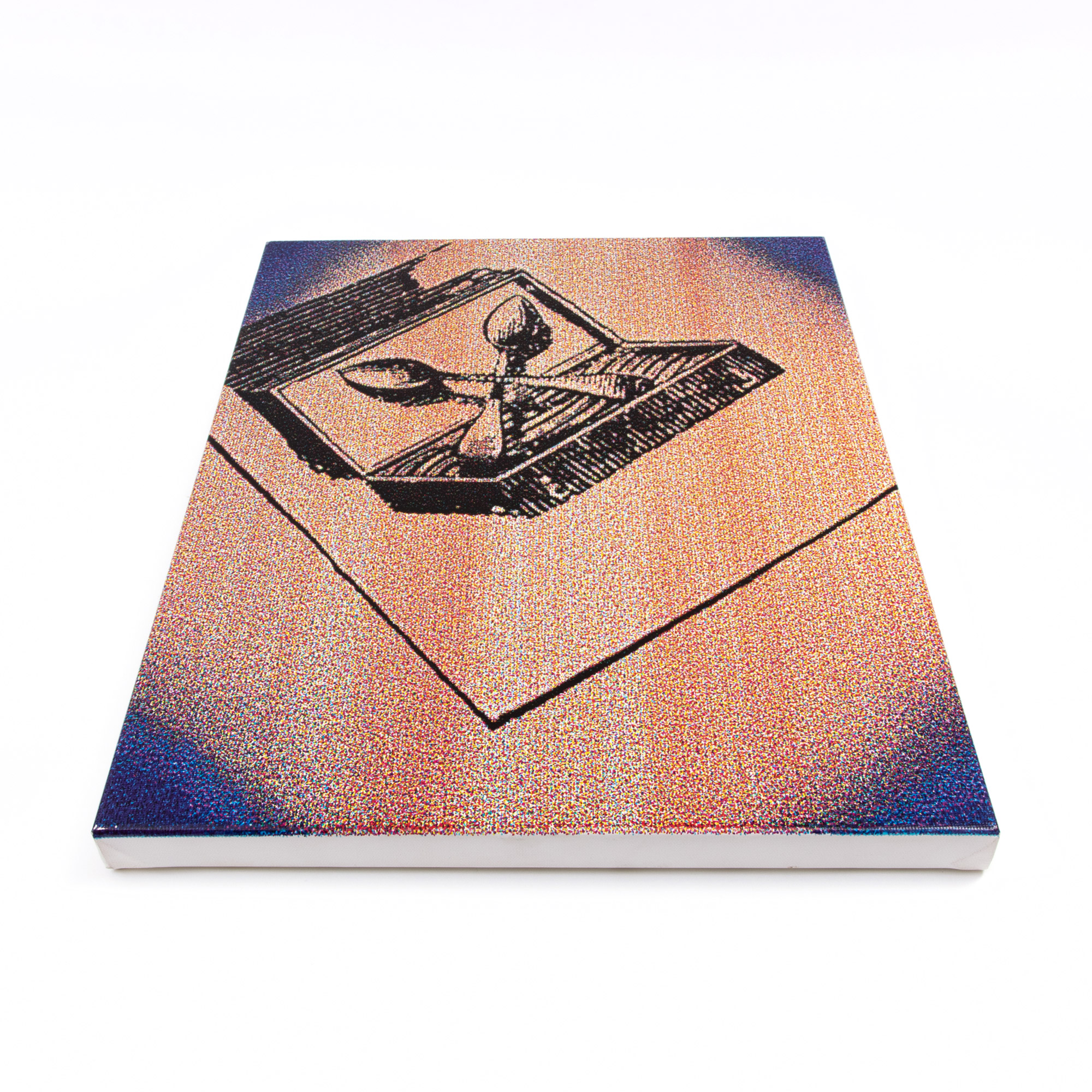Sigmar Polke (German, 1941-2010)
Dr Pabscht het z’Schpiez s’Schpäckbschteck z’schpät bschteut (Parkett No. 30), 1980/91
Medium: Digital print on vinyl with acrylic lacquer, mounted on stretcher
Dimensions: 50.2 x 40.3 x 2.5 cm (19 4/5 × 15 9/10 x 1 in)
Edition of 100 + XX: Hand signed and numbered on a label, verso
Publisher: Parkett Publishers, Zürich and New York
Catalogue raisonné: Becker/von der Osten 91
Condition: Very good






